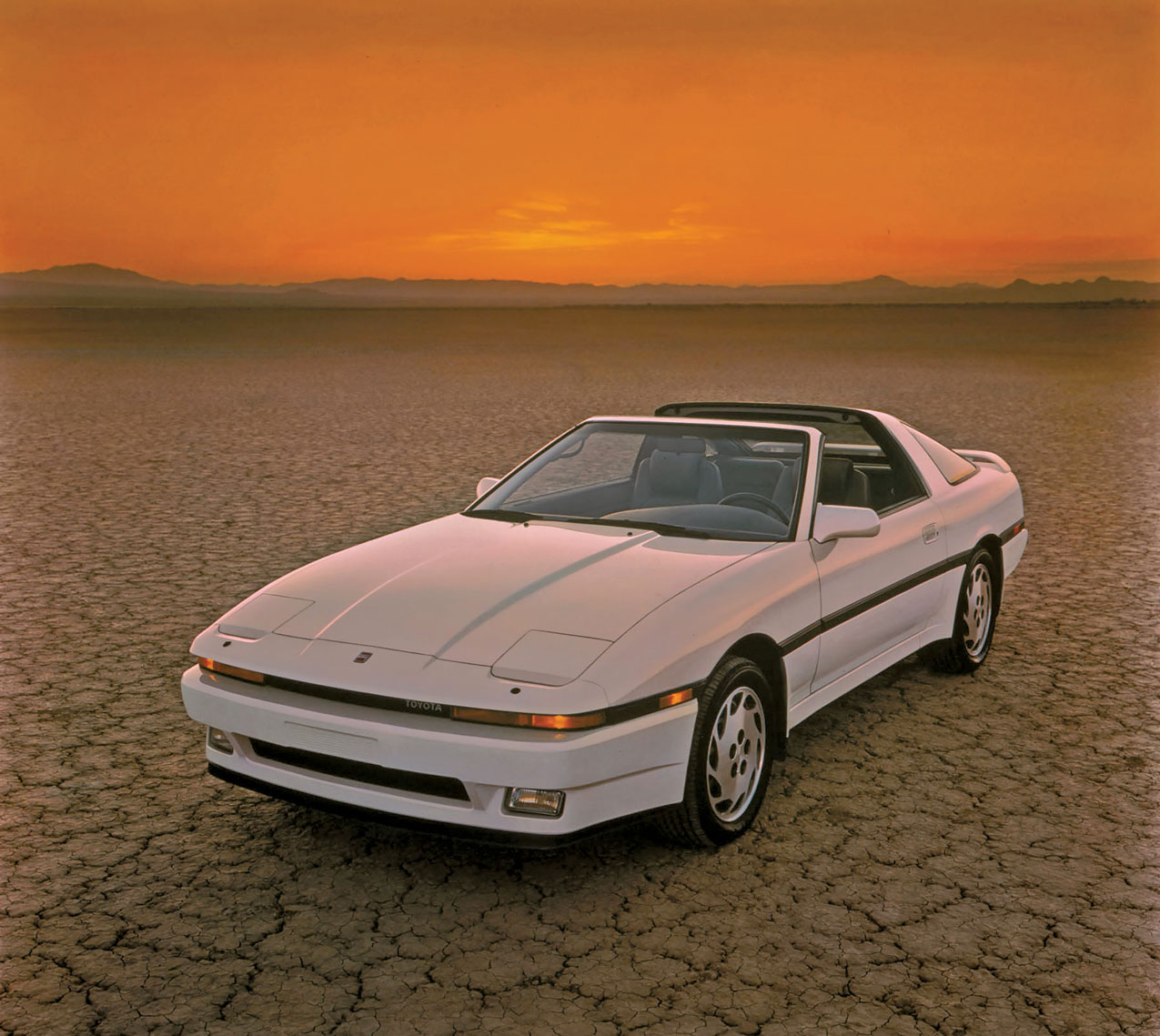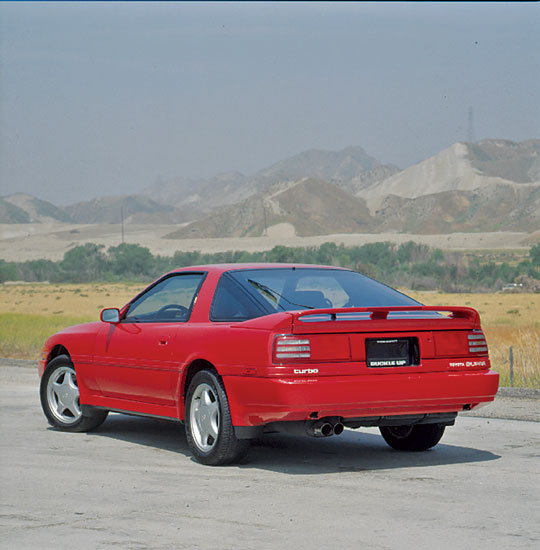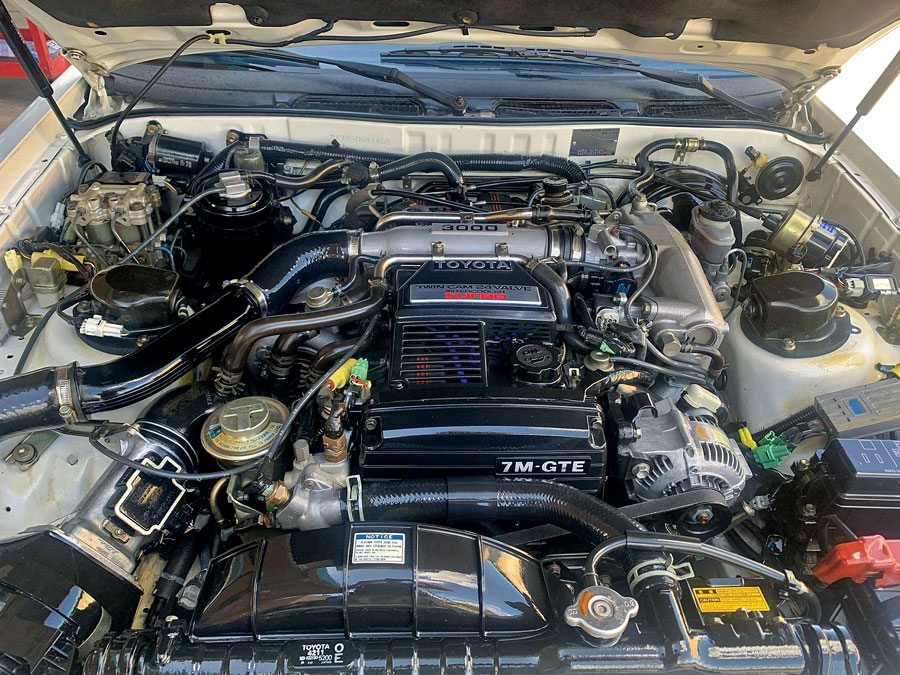
The Supra made a name for itself as Toyota’s halo car, enough that the company brought back the nameplate to the U.S. after a 22-year absence. The fifth-generation 2020 Supra is mostly a BMW Z4 under the skin, but like any sports car that sticks around for multiple generations, some versions are better than others.
The fourth generation (1993–98) has been hot among enthusiasts and collectors for some time now. With an appeal stretching well beyond just Japanese-car fans, these “A80” Supras are no longer affordable. So what about the third generation, the “A70”? Are these Supras, built from 1986 to 1992, a worthy alternative? Yes and no, but context is key.
Goodbye, Celica
The Supra has its roots in the lovable 1971–76 Celica, a 2-door hard-top coupe that had the Ford Mustang in its crosshairs. Initially dismissed as a cheap copy, it ended up proving itself with typical Toyota traits: reliability and build quality. In 1977, a new Celica designed by David Stollery (a former child actor turned designer) was given mixed reviews for being heavier, with a softer suspension, and returning worse gas mileage.
This is where the Supra was born … sort of. Toyota took the liftback version of the Celica and stretched the front end a bit to make room for its inline 6. The bogey was now the popular Datsun Z. The new model was sold as the Celica XX in Japan, but here in the U.S. it became known as the Celica Supra, introduced in 1979.
A second-generation Celica Supra (A60) debuted alongside the third-generation Celica in 1982. This is when the design started to really adopt a sporty GT look. The car came equipped with the 145-horsepower 5M-GE inline 6 also found in the Toyota Cressida.
Then, in 1986, another Celica redesign abandoned the rear-drive platform, and the Supra split off for good as a completely separate model.

A “true” Supra
The first true Supra, the A70, came about at a time when Japan was in an economic boom. Its domestic car manufacturers were creating cars loaded with new features, a wide range of trim levels and many different engine variants for the same model.
Seven engines were offered in the Supra in Japan, yet only one came to the American market, in two flavors: The 7M-GE and the turbo variant, the 7M-GTE. This was a capable motor, a 3-liter inline 6, with the naturally aspirated version producing 200 hp and 196 foot-pounds of torque, and 232 hp and 254 ft-lb from the turbo version.
But the 7M-GE also had an Achilles heel: under-torqued head studs. Toyota originally set the torque specs for both motors at the same 58 ft-lb (78 Nm), which led to a lot of blown head gaskets and warped heads. Many enthusiasts have since recommended making sure the heads get tightened to 72–80 ft-lb (97-108 Nm).
The suspension in the A70 traded out the MacPherson-style strut with trailing arms for a new double-wishbone setup. Higher trims received Toyota’s adjustable suspension system, called “TEMS (Toyota Electronically Modulated Suspension)” along with antilock brakes. Third-gen Supras were commonly offered with a metal sunroof, but a targa-roof version was also available.

A climbing market
With the fourth-generation Supra now passing into six-digit valuations at the high end, many would-be owners are “settling” for the A70. Unfortunately, people will still ask you why you don’t have an A80.
However, just as we have seen with a lot of Japanese cars over the past 10 years, A70 prices are rising. These cars in very good condition were once easily obtained for around $3,000–$6,000. Now it is difficult to find a really nice one for under five digits, with the top of the market around $30,000. As with most cars, specific years and colors tend to be more desirable due to low production numbers, such as the 1992 Teal Metallic with Shadow Grey interior.
While looking for one of these Supras, beware of some common issues. We’ve already mentioned that the head studs can be a ticking time bomb, so check for signs of a blown head gasket. Targa-top cars can have leaking seals. Broken solder joints on the taillamp relay can develop over time. Rear subframes sometimes crack due to poor reinforcement. Later model years somewhat remedied this problem with better bracing, but cars that have been driven hard can be susceptible regardless.
Beware as well of the power-hungry guys who have used their A70s as a platform for a performance build. Motor swaps are common in these cars, including with later Supra motors, but Chevy LS engines are another option. While this sure sounds like fun, if you want to buy someone else’s project, make sure you get it for a fun price.
Aftermarket support for these cars is a lot better than it was 10 years ago, partly due to it being a cheaper car to acquire and modify. Still, there are also plenty of owners trying to preserve excellent stock examples of these cars, just as with many other significant Japanese sports cars of the ’80s and ’90s.
While the A70 Supra will always be overshadowed by its younger brother, it can still provide a lot of enjoyment for the price.